The International 2016: everything you need to know
Get ready for the Dota event of the year.
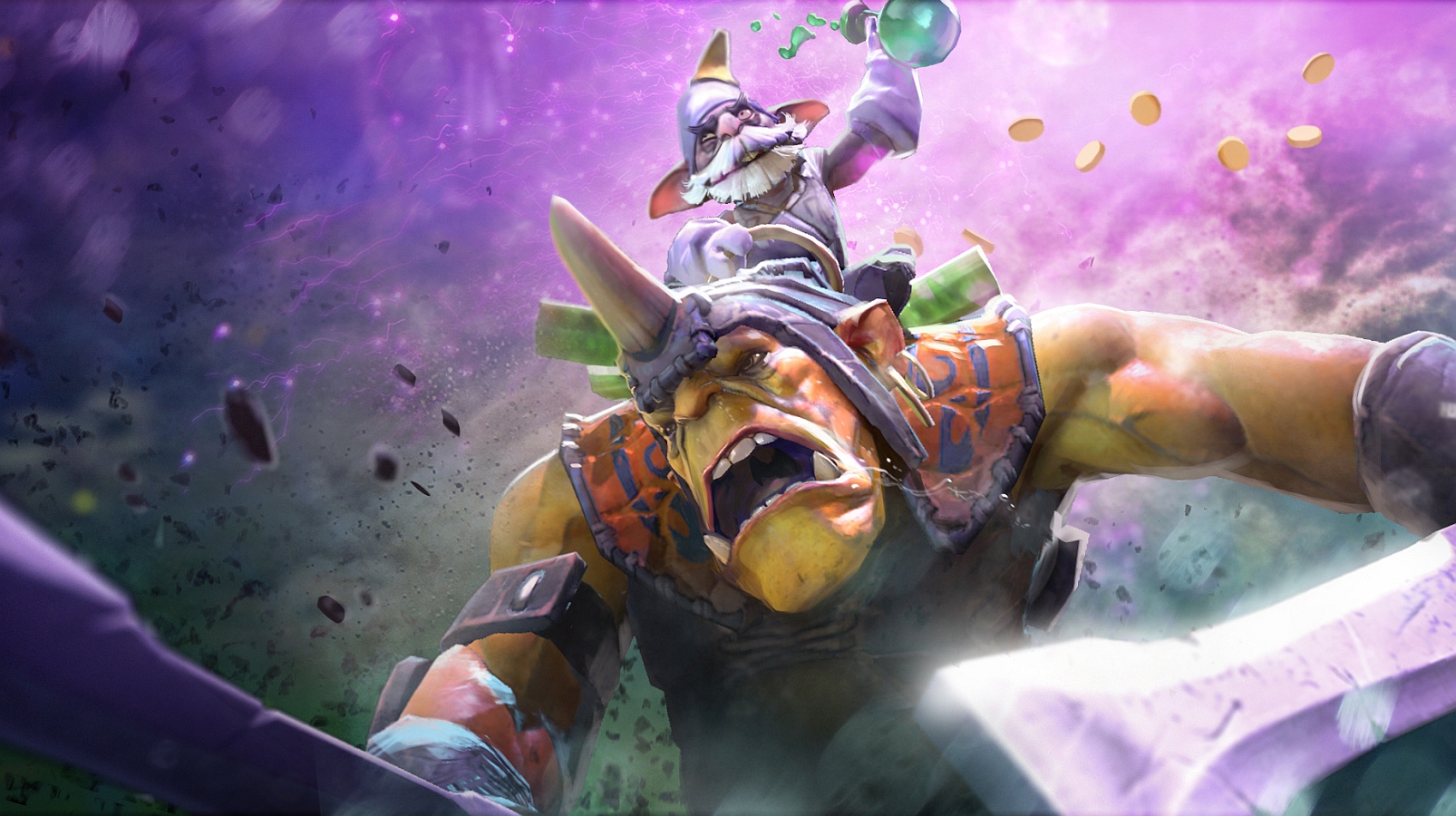
A BEGINNER’S GUIDE TO THE CURRENT META
This year’s metagame is going to present a challenge to newcomers, as Dota has rarely been as varied or competitive as it is this year. Across the group stage, 101 heroes were picked out of the 110 that are available in competitive play. That’s an extraordinarily high number, indicating the enormous amount of viable drafts and strategies available to a top-tier team. Even so, a couple of themes are emerging.
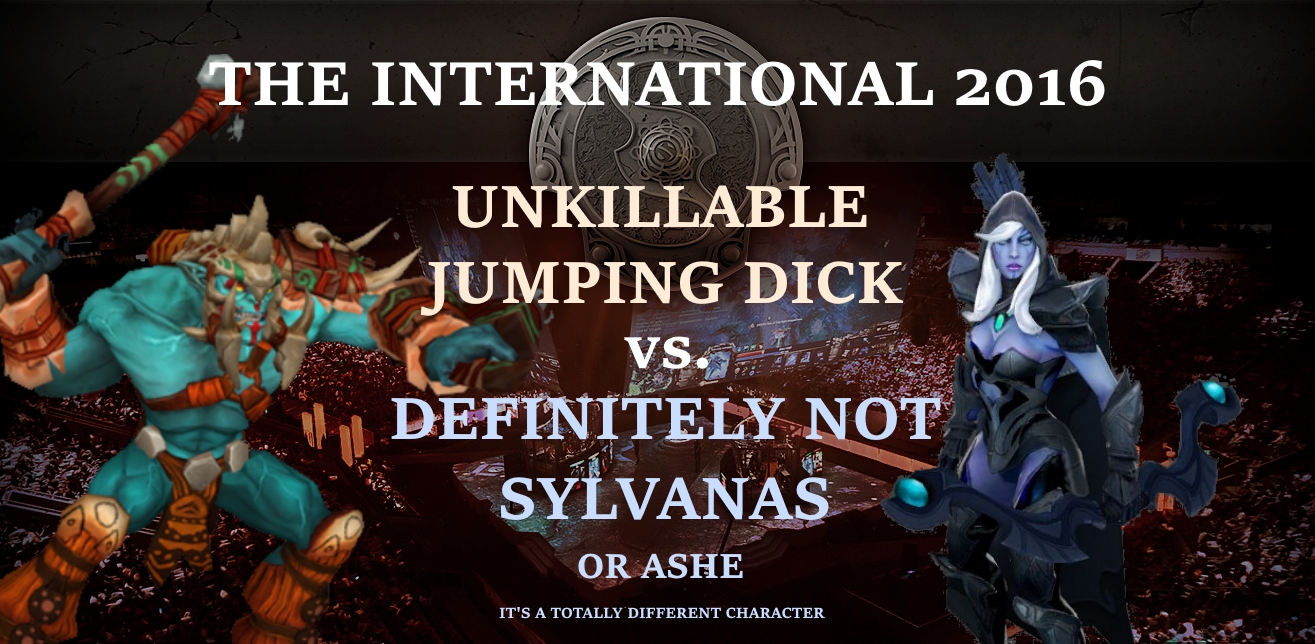
Momentum is tremendously important to every team’s success in Dota 2. That can mean something tangible, like a gold or experience lead, or it can be subtle: psychological pressure, information about enemy movements, and so on. Teams work to build this momentum during the early part of the game, the laning phase, at which point much of the drama of a match comes from that team’s success or failure at converting that momentum into objectives like towers, barracks, and Roshan.
Many of this year’s top picks are contested because they’re very good at building momentum for their team. Drow Ranger and Huskar are great examples of this, but for different reasons. Drow gives a passive damage boost to all of her allied ranged heroes, making it easier for characters like Invoker to win their lanes. She’s also a fantastic siege unit when time comes to push towers.
A well-supported Huskar has a similar effect. This hero, once out of favour, becomes almost unkillable the closer he gets to death. If his supports can sustain him on the brink, the character is almost broken: a snowballing spear-tossing flaming ball of death that ends games very, very quickly. He’s been the source of multiple upsets during the group stages.
There are plenty of other examples, many of which are unpacked below. While it’s impossible to give a rundown of every character that might be picked—particularly in this meta—these are characters you can expect to see a lot. Where possible, I’ve also included a picture of their Immortal particle effects: cosmetics that alter the way certain abilities look, which is potentially confusing for returning spectators. First, however, let’s run through the items that newcomers need to be aware of.
I should stress that you needn't worry if you don't take all of this information in right away. Read it through, and return here if something confuses you later on. Dota 2 is best absorbed slowly, not crammed in all at once. The best way to learn is, as ever, by watching the games.
THE ITEMS
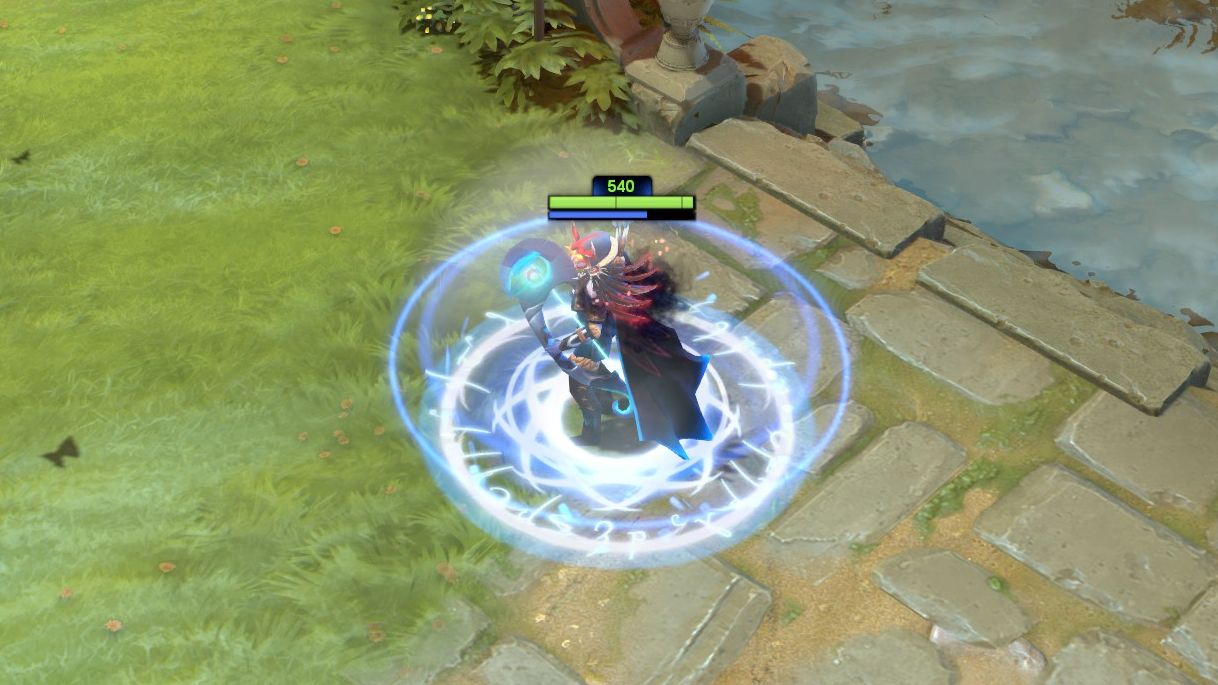
Town Portal Scroll
Keep up to date with the most important stories and the best deals, as picked by the PC Gamer team.
‘TP’ scrolls are a vital part of the game. These allow players to teleport to a friendly structure, saving essential travel time. These cost money and are on a fairly long cooldown, and being caught unable to teleport can be lethal. They can also be used as an escape, but the channeling process can be interrupted by crowd control effects. Look for the telltale circular ring of light.
Blink Dagger
A Blink Dagger allows any hero to teleport a short distance on a relatively low cooldown. This is essential for many ‘initiator’ heroes like Tidehunter, Batrider and Sand King. You’ll hear a lot about a player’s ‘blink timing’—this is how fast they’re able to build this essential item. Blink can also be ‘cancelled’ by damage, meaning that it gains a short cooldown whenever the hero holding it takes a hit.
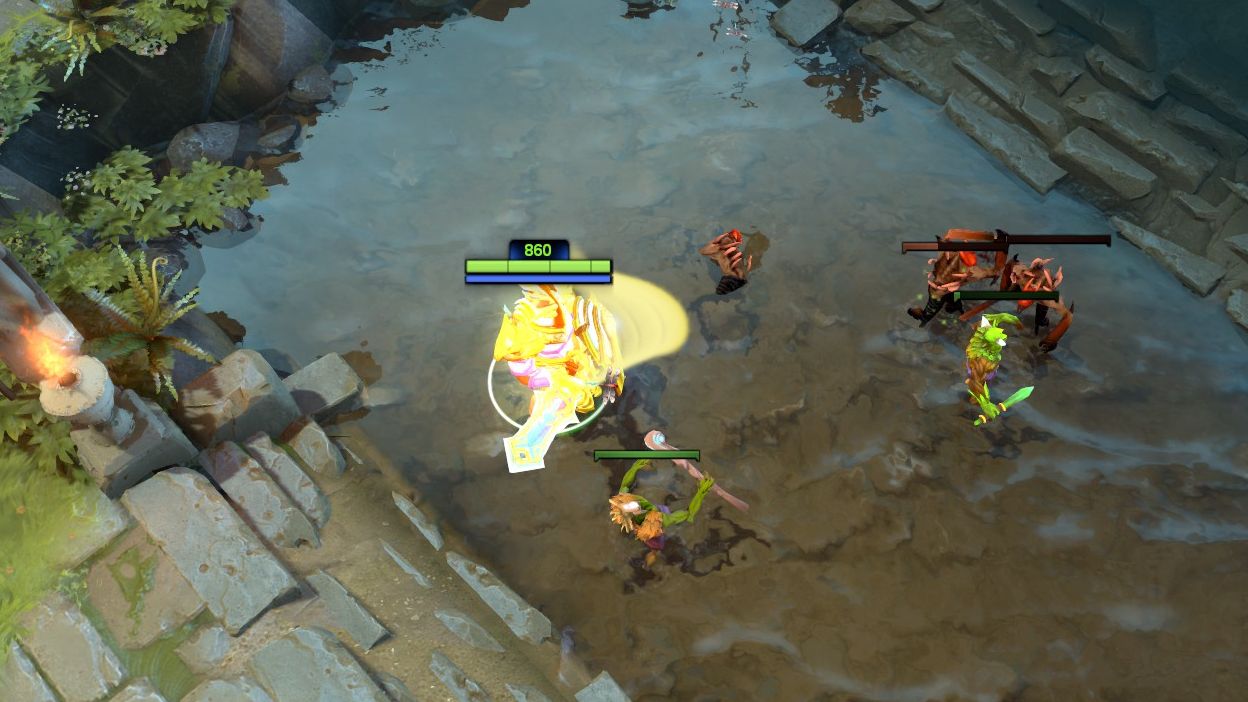
Black King Bar
Dota 2’s most impactful defensive item, Black King Bar makes a hero immune to magic damage and most crowd control effects. It also makes them huge and gold, which is a bonus. You’ll see this come out often on carries, and its arrival is often a sign that a team is ready to take fights as a unit. ‘BKB’ lasts 10 seconds the first time it is used and then loses a second of its duration with every subsequent use down to 5 seconds. For this reason, you’ll often hear casters lament if a player ‘wastes’ their 10 second charge.
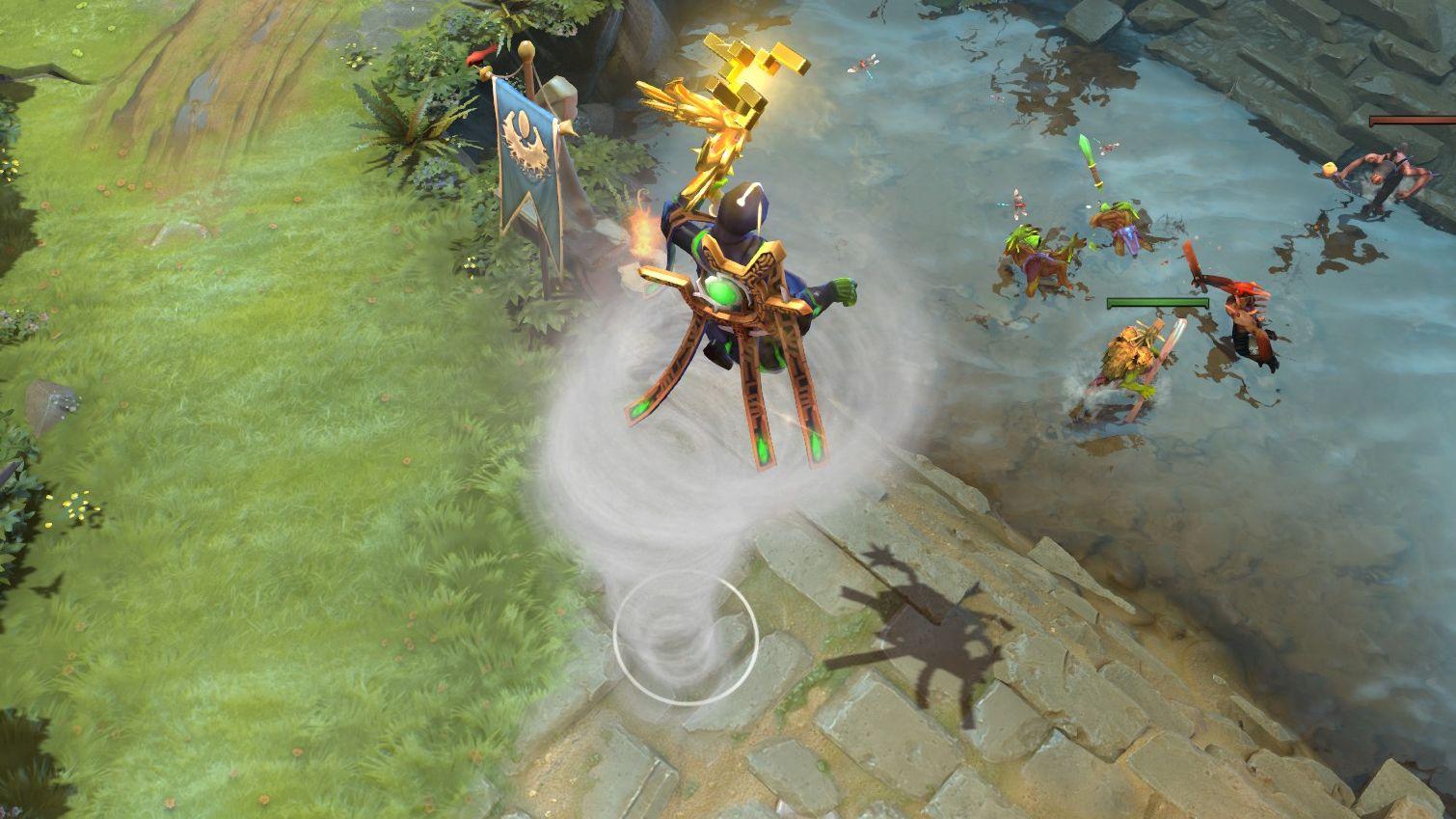
Eul’s Scepter
Eul’s Scepter allows a character to propel themselves or an enemy into the air atop a swirling cyclone. Heroes are immune to damage while in the air, and it can be used to interrupt channeled abilities and TP scrolls. Sometimes used defensively, it’s also often used to catch fleeing heroes or set up combos with skillshots.
Force Staff and Hurricane Pike
Force Staff allows a character to thrust themselves, an ally or an enemy forward a certain distance. It has loads of defensive and offensive applications, and if you see a character suddenly boost out of danger then chances are they or one of their supports just ‘forced’ them. Hurricane Pike is a new item, an upgrade to the Force Staff with an additional use: when used on an opponent, both heroes will be forced away from one another: but the Pike user will still be able to attack their opponent with unlimited range.
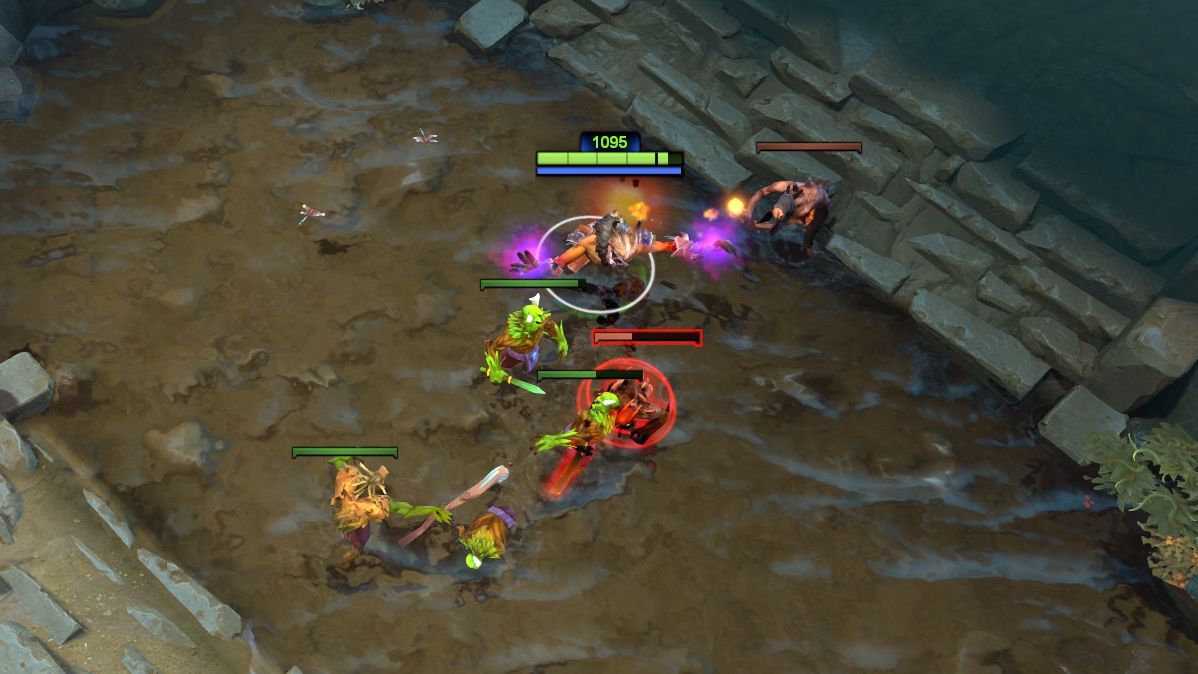
Armlet of Mordiggian
Often just called ‘armlet’, this item is one of the most visible momentum boosts in the game. When activated, it gives melee carries a big boost in damage and hitpoints (and purple hands) while draining their health until it is switched off. You’re very likely to see a technique called ‘armlet toggling’, where a character switches their armlet on and off in between damage instances in order to continually reapply the hitpoint boost and soak up damage. This is incredibly risky, as between each toggle the hero has only a single hitpoint and the bonus health doesn’t kick in straight away, but in the hands of a skilled player it’s a breathtaking way to absorb obscene amounts of damage.
THE HEROES
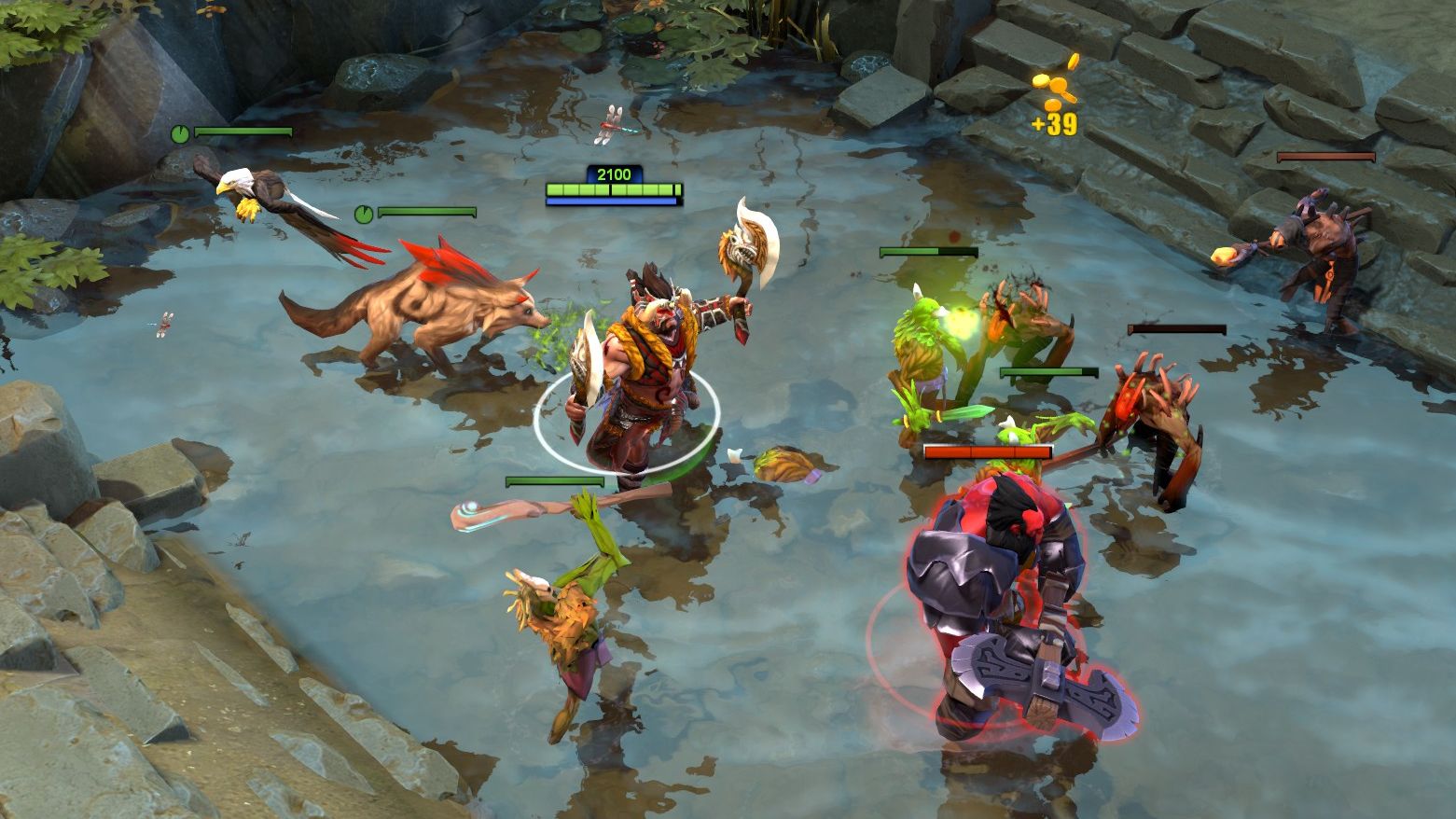

Beastmaster
Beastmaster has had a place in the meta for a long time now, and for good reason. His ultimate, Primal Roar, is a lengthy and reliable AoE stun. He’s also able to summon a scouting hawk and a boar with a nasty slow, providing his team with good general utility, pushing power, and the potential to secure pick off kills.
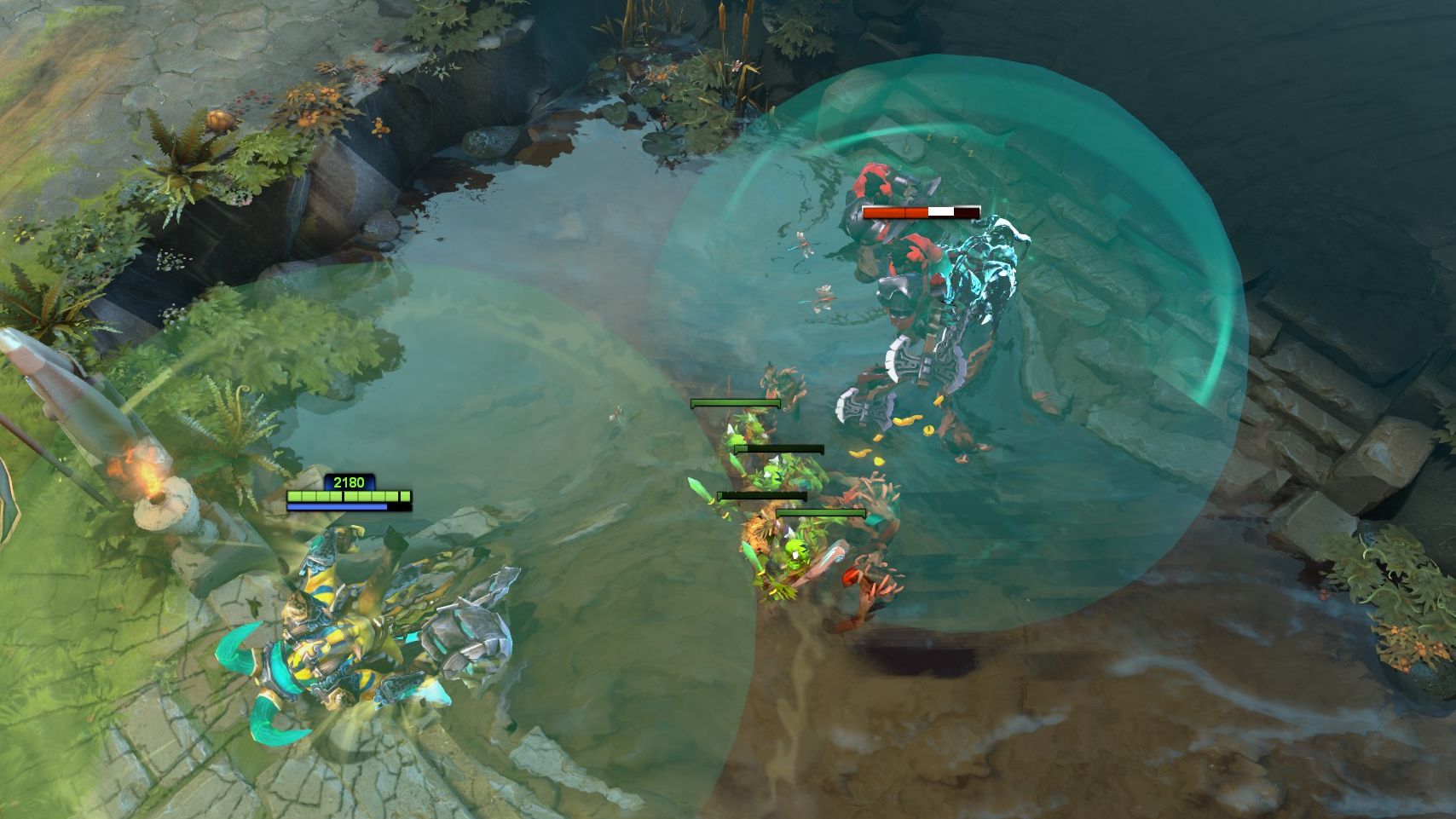
Elder Titan
Elder Titan is now a common pick and ban thanks to his unique disable. Echo Stomp activates after a short channeling period, applying a lengthy sleep effect to every enemy caught in its blast. Elder Titan can also project an astral duplicate of himself that casts Echo Stomp whenever he does, extending the ability’s area of effect. Enemies that are asleep wake up if they take damage, but skilled players can work around this and its disruptive effect on a teamfight, as well as its power against massed pushes, accounts for the hero’s new popularity.
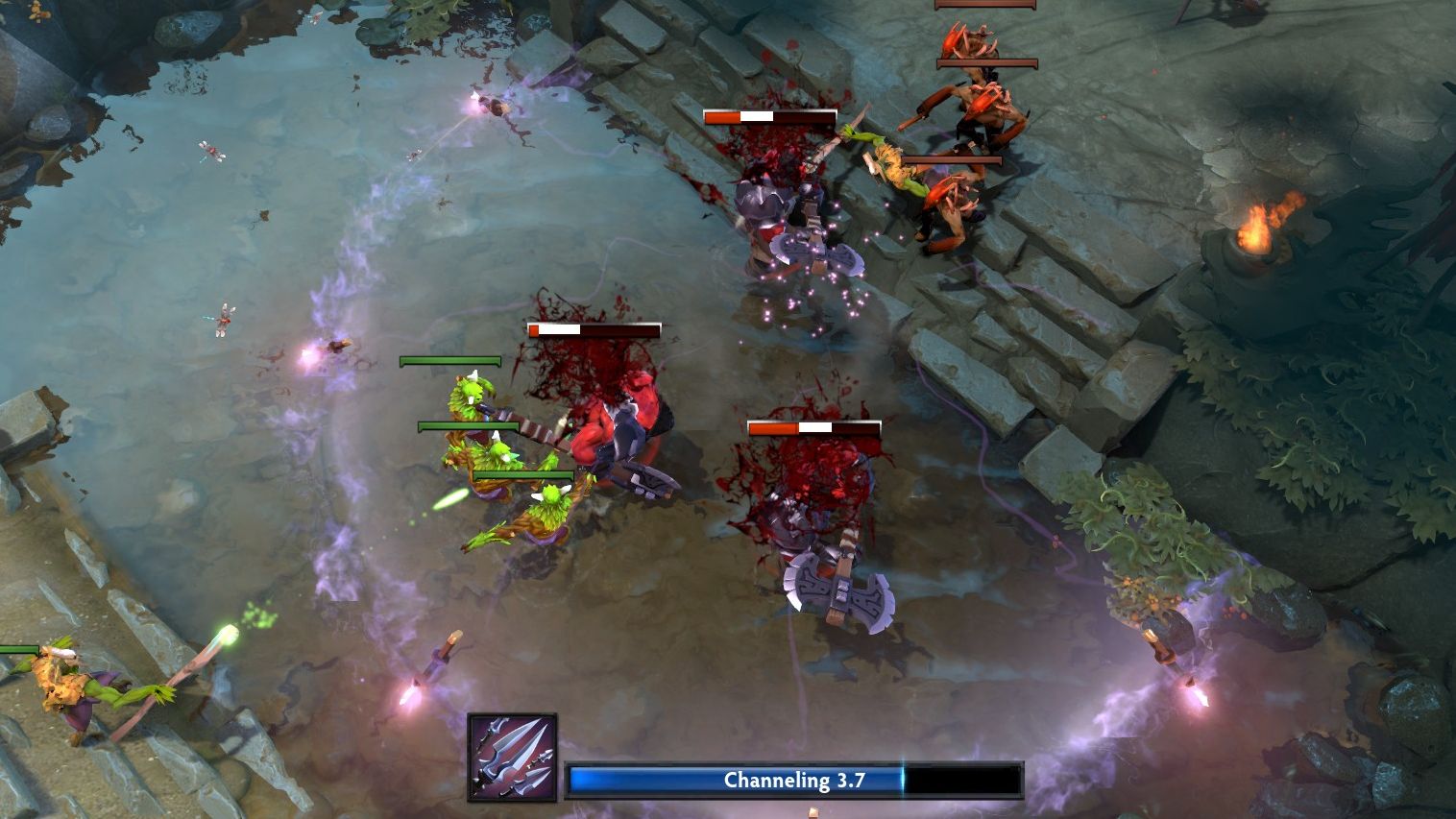
Riki
Once simply the bane of low-level pub games, a reworked Riki has now found a home in the pro scene as a roaming support. His permanent invisibility gives him obvious potential as a scout and he provides control in fights with his silencing Smoke Screen. His new ultimate, Tricks of the Trade, removes him from the map while he invisibly strikes every enemy within a circular AoE. If you see a lot of people dying inside a big pink ring, Riki has happened.
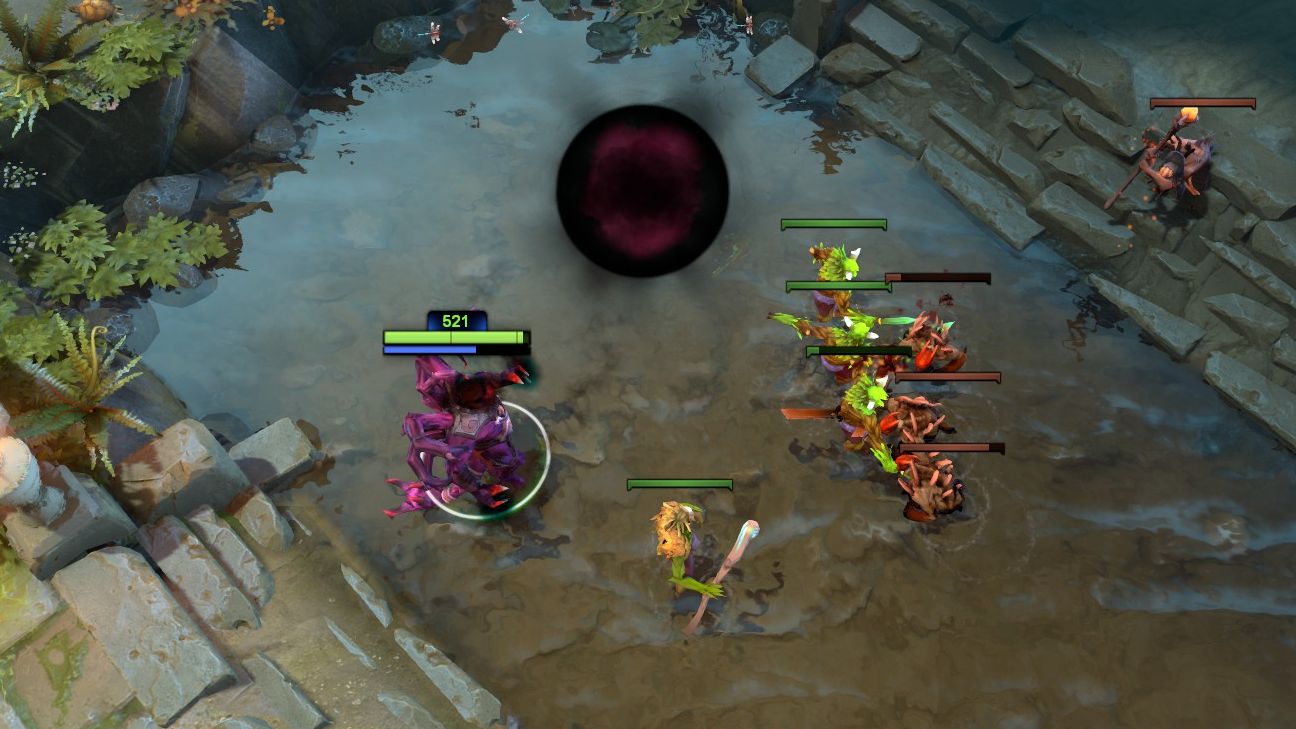
Shadow Demon
Shadow Demon has made a triumphant return to the meta lately as a long series of buffs finally bore fruit. He provides utility to his team as a support hero with much of his power centring around Disruption. This encases an enemy or ally in an orb for several seconds, during which time they’re immune to damage and completely disabled. As they emerge they’re joined by two illusory duplicates under the control of Shadow Demon. Disruption has offensive potential, particularly in combination with heroes with skillshot disables like Mirana and Elder Titan. It also helps Shadow Demon’s team transition into a push, as using it on a beefy ally creates illusions that can help with a siege.
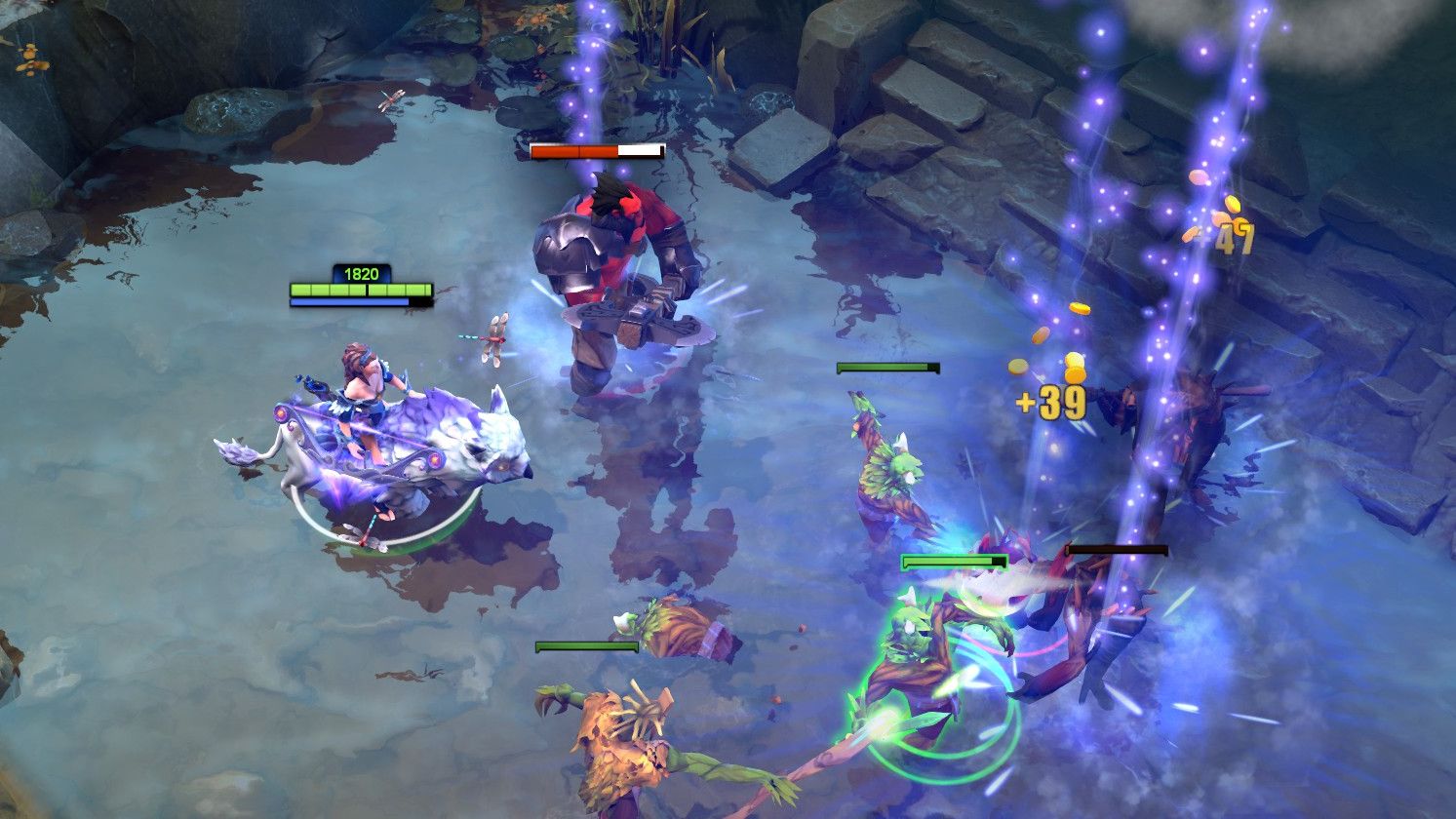
Mirana
Changes to Mirana’s abilities and itemisation have given her new life as a roaming carry with powerful magical burst damage. Her skillshot, Sacred Arrow, now instantly kills any creep it hits with the exception of ancients. This makes it much easier for Mirana to farm, as she can start killing high-level jungle creeps from the very start of the game. This farm is increasingly going towards items that boost her magic damage, like her new Aghanim’s Scepter upgrade that causes her to trigger her Starstorm nuke constantly as long as she’s near an enemy.
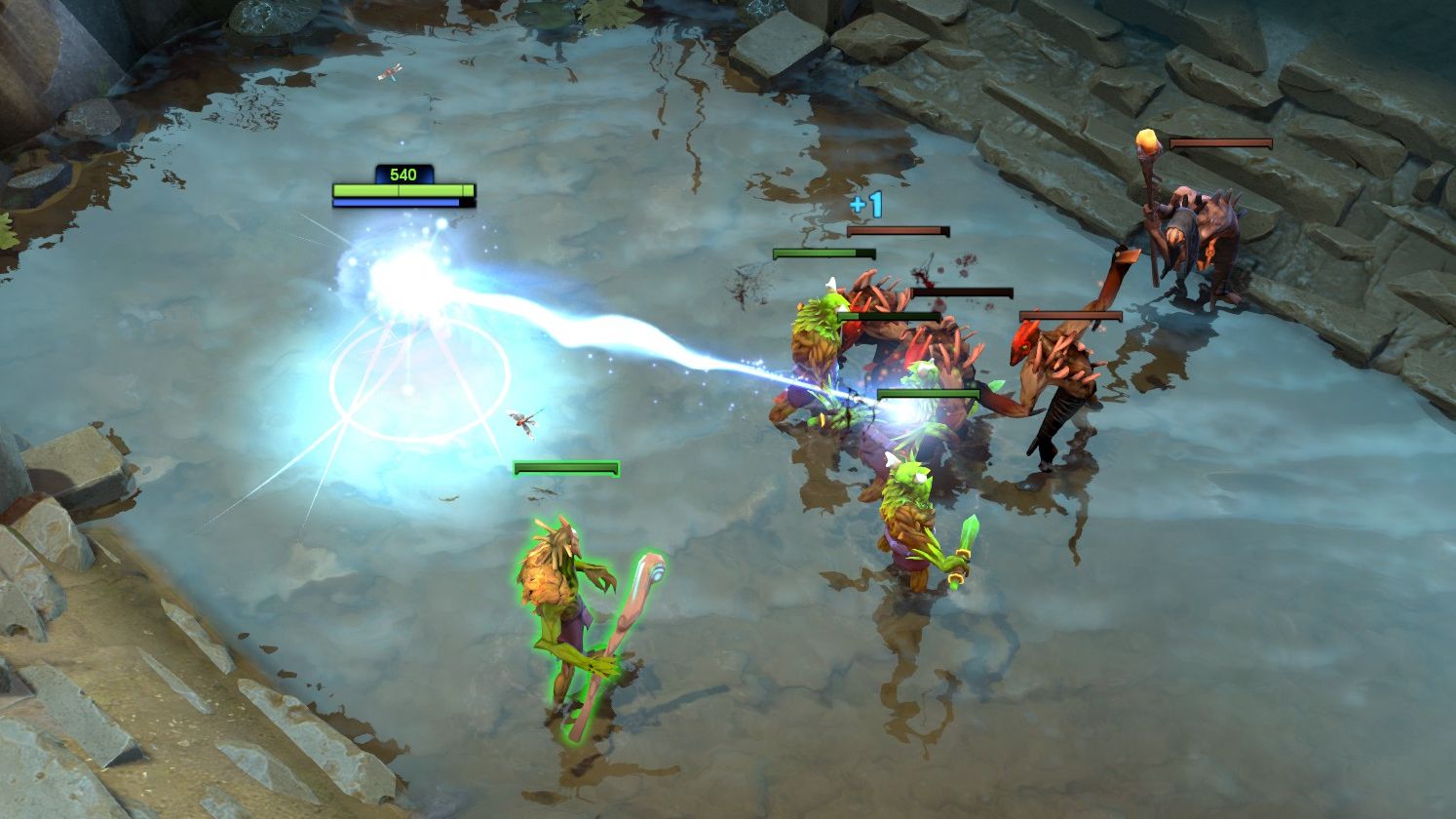
Io
Io has been first ban material for a long time, and this was particularly true in the group stage. He plays well into the current meta due to his ability to sustain allies with Tether and Overcharge: he’s one of a number of supports that plays well with Huskar. Relocate is still a powerful ganking and map control tool, giving Io and his tethered friend the ability to suddenly appear anywhere on the map.
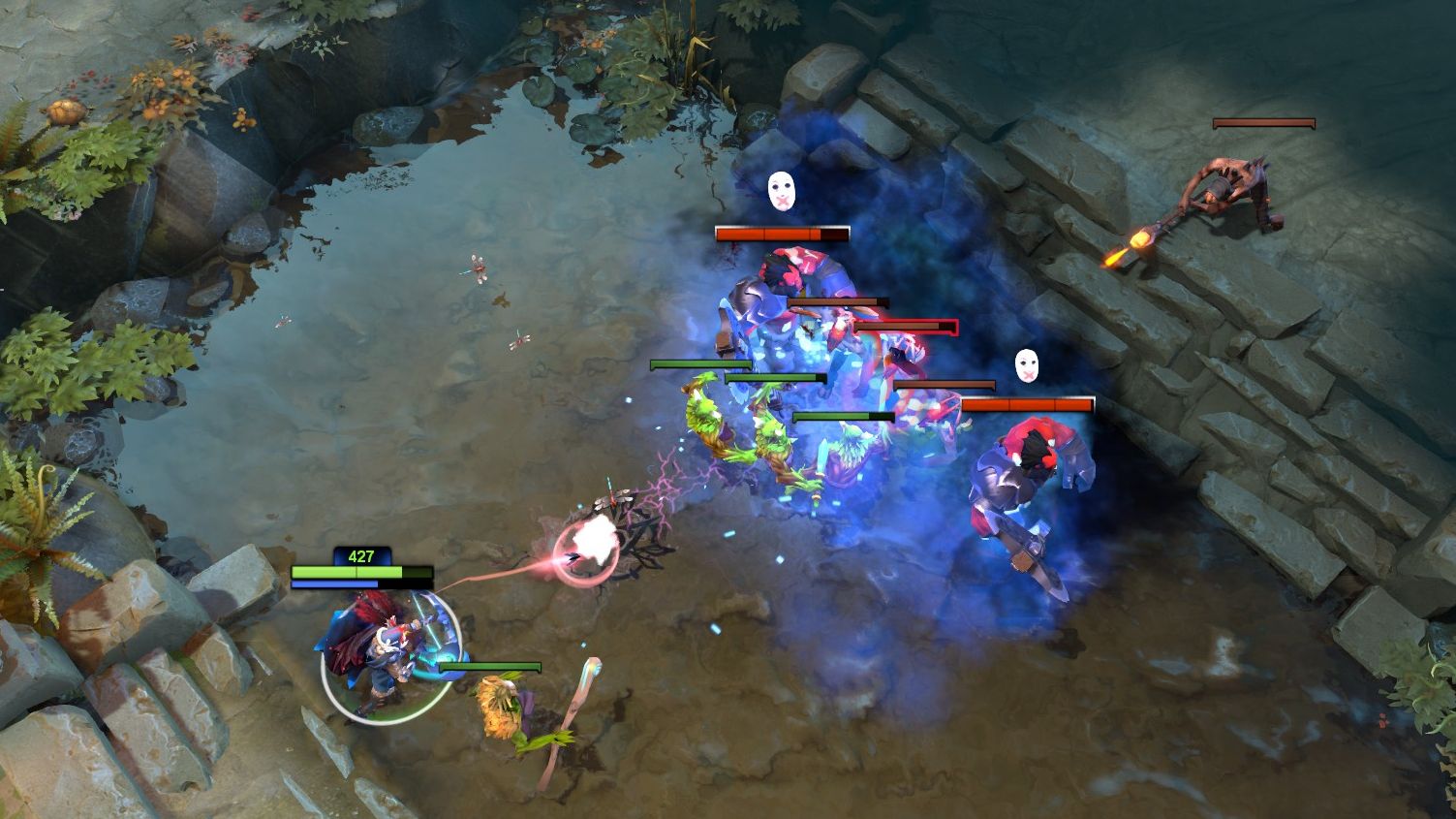
Drow Ranger
Much of Drow’s power in this meta comes from the ranged damage boost that she grants her team, as mentioned earlier. But she has useful control options in her toolkit, too. Gust is a knockback and silence that makes her a little less vulnerable to heroes that can blink on top of her, and players have started picking up Hurricane Pike as a way of giving her increased survivability and control. She's certainly benefited from better item options after the last couple of patches.
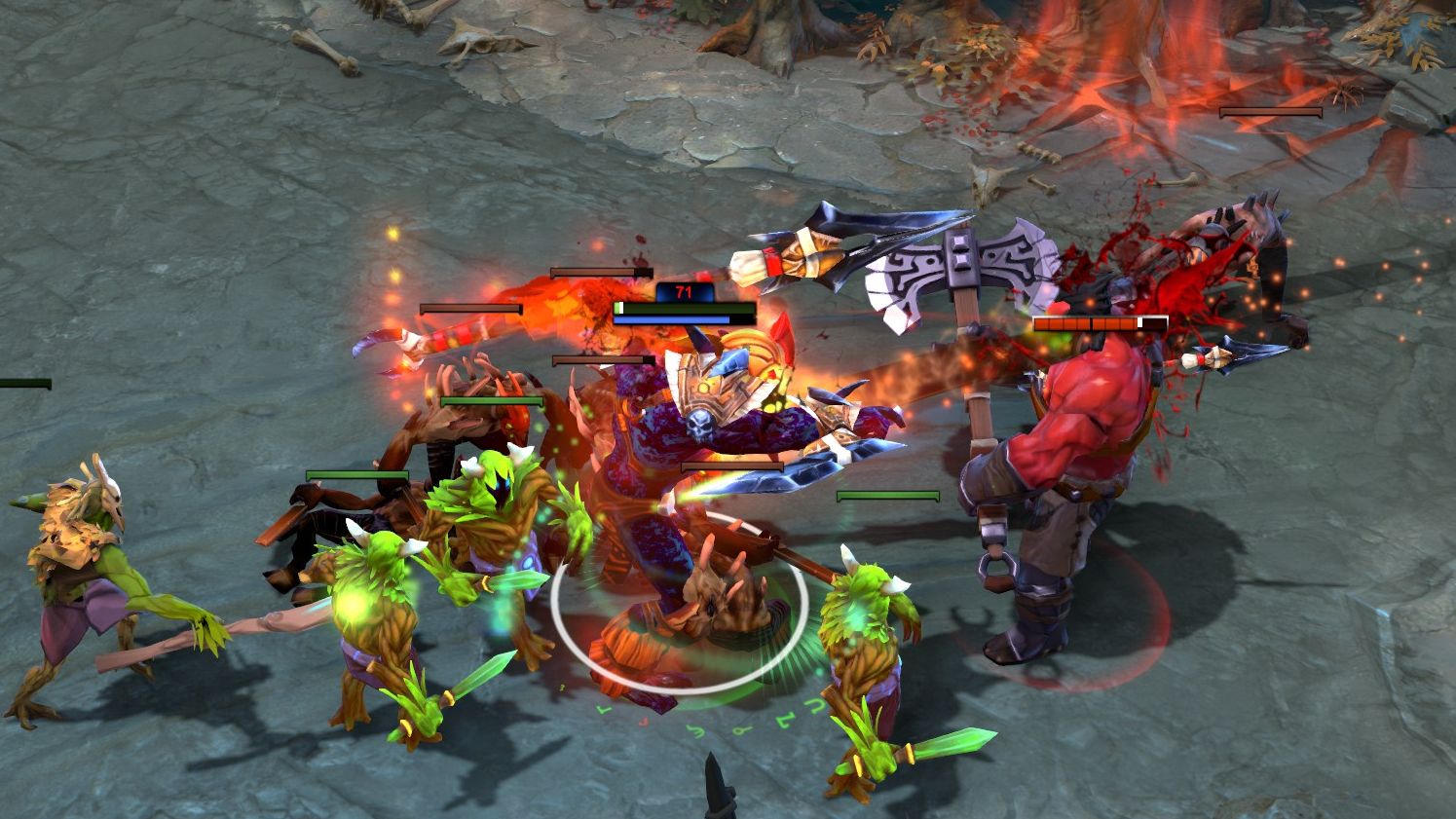
Huskar
A Huskar pick is risky because, if anticipated and countered, he’s terrible. Get the right start, however, and he’s terrifying: a leaping, flaming spearman that becomes more powerful the closer he gets to death. His ultimate, Life Break, is what you’re seeing when he leaps through the air at a target. This sacrifices a chunk of Huskar’s health in order to rip out an equivalent chunk of his opponent, making him naturally strong against characters that rely on deep HP pools to survive. He needs the right support, however.
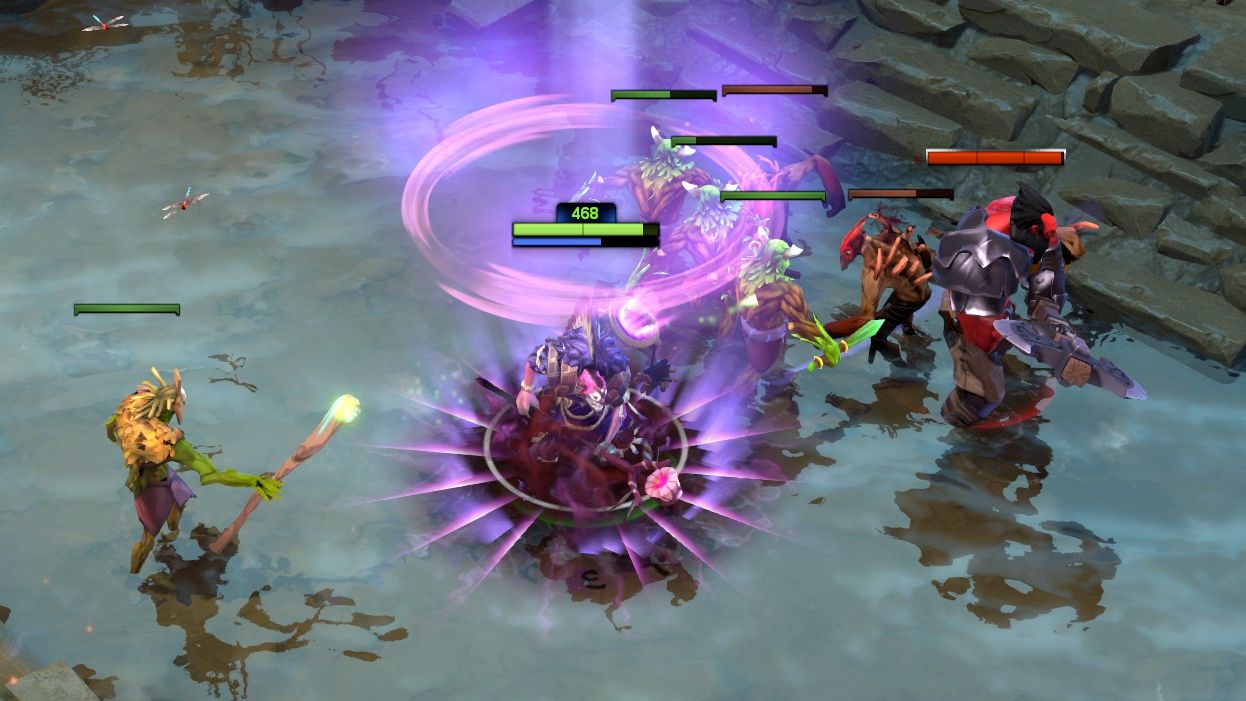
Dazzle
Dazzle is one of those supports. The key ability here is Shallow Grave, pictured. For as long as an ally is encased in Dazzle’s column of pink light, they can’t be reduced below 1 hitpoint. This has obvious synergy with Huskar’s love of danger, but it’s a powerful sustain tool regardless of the character that Dazzle is supporting. Expect to see a lot of the Shadow Priest at TI6.
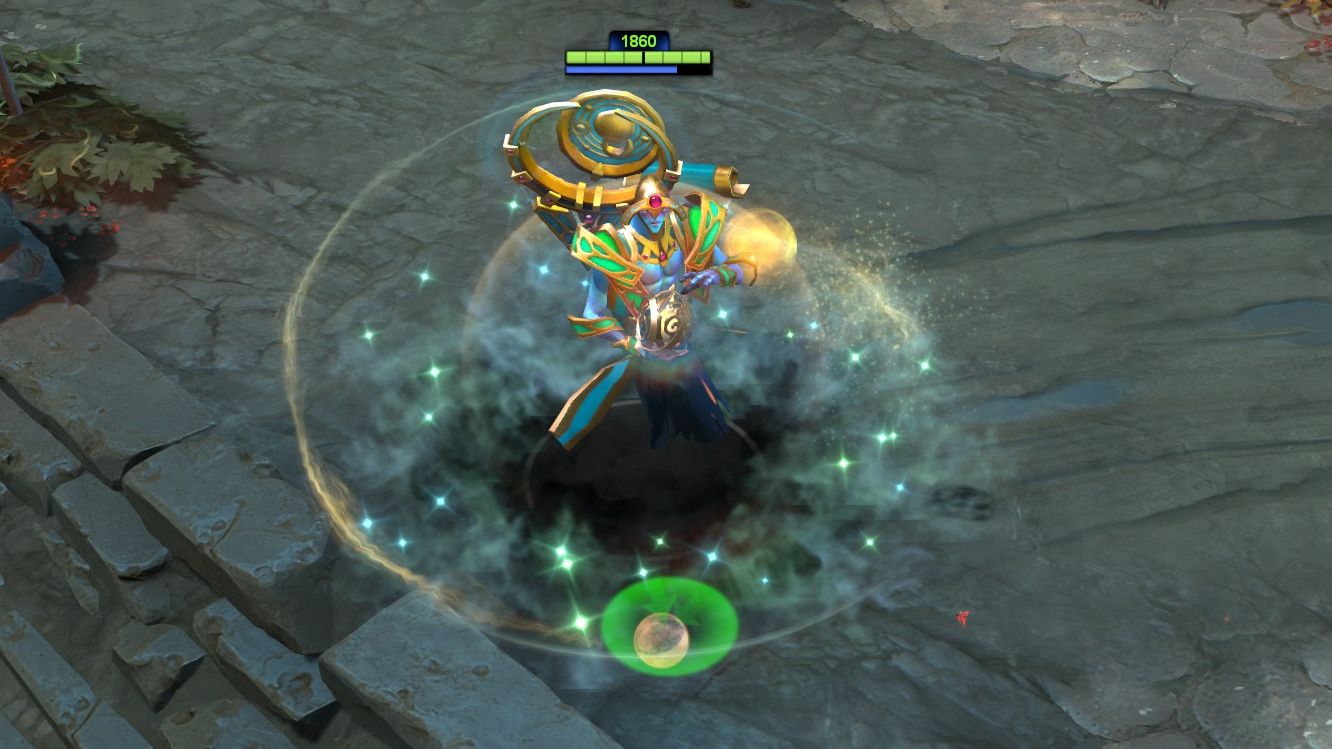
Oracle
Oracle is one of Dota’s newer supports and also one of the more confusing. The main thing you need to know is that he provides damage, control, damage mitigation and healing, and that all of these things are mixed together and different effects can be produced based on how he times his abilities. The game changer, however, is his ultimate—False Promise. This purges most negative status effects from an ally while temporarily pausing all damage and healing done to them. This damage and healing isn’t applied until False Promise’s duration ends, and healing is doubled. In the right circumstances, this allows Oracle to guarantee that an ally survives a battle and allows them to soak up a tremendous number of nukes while they’re at it.

Batrider
A perennial favourite, Batrider’s ability to roam the map setting up kills for his allies with Flaming Lasso is once again relevant in the new meta. Batrider can also pump out a respectable amount of magic damage with Firefly, which allows him to fly over obstacles while leaving a trail of flame in his wake.
That’s all for now! Hopefully this guide will help you get the most out of one of the year’s most exciting esports events. Check PC Gamer Pro every day during the international for highlights, analysis and more.
Joining in 2011, Chris made his start with PC Gamer turning beautiful trees into magazines, first as a writer and later as deputy editor. Once PCG's reluctant MMO champion , his discovery of Dota 2 in 2012 led him to much darker, stranger places. In 2015, Chris became the editor of PC Gamer Pro, overseeing our online coverage of competitive gaming and esports. He left in 2017, and can be now found making games and recording the Crate & Crowbar podcast.


